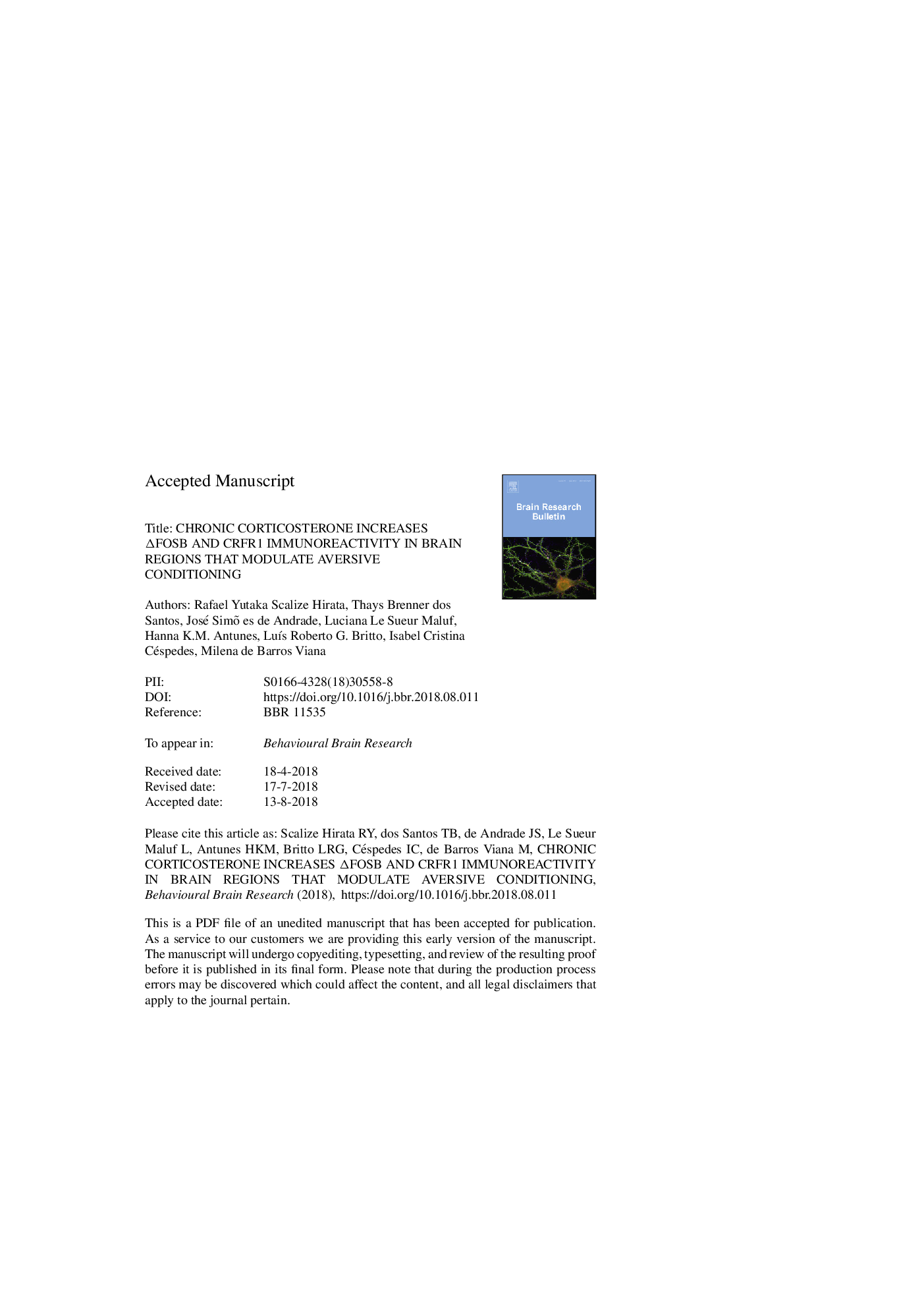| Article ID | Journal | Published Year | Pages | File Type |
|---|---|---|---|---|
| 10138261 | Behavioural Brain Research | 2019 | 41 Pages |
Abstract
Previous studies showed that chronic treatment with corticosterone facilitates elevated T-maze (ETM) inhibitory avoidance and a step-down avoidance task, responses that have been used to investigate aversive conditioning and memory processes. On the other hand, chronic corticosterone does not alter ETM escape from the open arms. The purpose of the present study was to further investigate the effects of chronic corticosterone treatment (200âmg pellets, 21-day release) in an animal model of anxiety that does not involve aversive conditioning: the light/dark transition model. We also investigated the pattern of ÎFosB immunoreactivity (ÎFosB-ir) in different brain regions. To examine how treatment with chronic corticosterone interferes with CRFR1 expression we measured CRFR1 in the same brain structures that exhibited increased ÎFosB-ir. Results showed that chronic treatment with corticosterone did not alter behavioral measurements performed in the light/dark transition model. On the other hand, ÎFosB-ir was increased in several structures that modulate aversive conditioning: the cingulate cortex, the ventro and dorsolateral septum, the amygdala, the paraventricular, dorsomedial and ventromedial hypothalamus, the periaqueductal grey matter, the dorsal raphe, and the median raphe nucleus. Chronic treatment with corticosterone also increased CRFR1-immunoreactivity in the ventrolateral septum, central amygdala, dorsomedial hypothalamus, ventral region of the dorsal raphe and median raphe. These results contribute to a better understanding of the behavioral and neurobiological alterations induced by chronic exposure to glucocorticoids.
Related Topics
Life Sciences
Neuroscience
Behavioral Neuroscience
Authors
Rafael Yutaka Scalize Hirata, Thays Brenner dos Santos, José Simões de Andrade, Luciana Le Sueur Maluf, Hanna K.M. Antunes, LuÃs Roberto G. Britto, Isabel Cristina Céspedes, Milena de Barros Viana,
